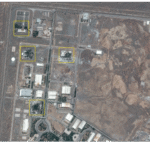As artificial intelligence continues to transform global industries, Amazon is at the forefront of embracing this technological revolution. However, this progress is not without its consequences. The e-commerce and cloud computing giant has announced that it expects to reduce its corporate workforce as it increases reliance on AI-powered systems. This move marks a pivotal shift in Amazon’s operational structure and signals a broader trend sweeping across the tech sector: the replacement of white-collar roles with intelligent automation.
While Amazon has often been associated with the automation of warehouse jobs through the use of robotics, the current wave of AI deployment is taking aim at a different kind of workforce—its corporate and administrative employees. With the company accelerating the integration of generative AI and machine learning into its customer service, retail management, and cloud operations, a significant number of back-office roles are becoming redundant or less essential.
A Strategic Evolution Rooted in AI
Amazon’s reliance on AI is not a sudden development. Over the past decade, the company has steadily incorporated machine learning across its vast ecosystem—from personalizing product recommendations to optimizing logistics and detecting fraud on its platforms. However, the advent of more sophisticated generative AI tools, including those capable of language generation, decision-making, and code writing, has pushed the envelope even further.
In a recent internal memo, Amazon’s senior leadership acknowledged that the growing adoption of AI across various departments will inevitably impact headcount. The retail giant expects this technological transformation to streamline workflows and automate tasks that were previously carried out by teams of corporate professionals, particularly in areas such as marketing, customer service, HR operations, and financial analysis.
This evolution, Amazon argues, will allow the company to operate with greater efficiency, reduce operational costs, and reallocate resources to areas of innovation and growth. But for the employees affected by this shift, the message is clear: adaptability is no longer optional.
The New Face of Corporate Downsizing
Layoffs in the tech industry have become a common narrative in recent years, as companies adjust to post-pandemic realities and shifting market demands. However, what distinguishes Amazon’s current approach is the explicit framing of AI as the central driver behind the upcoming job cuts.
Amazon has made substantial investments in its AI infrastructure through Amazon Web Services (AWS), launching generative AI tools such as Amazon Bedrock and Titan. These tools are not only designed for client use but also support internal automation. For example, AI can now generate product descriptions, summarize customer reviews, and even manage ad campaigns with minimal human input.
Furthermore, Amazon is exploring AI-driven decision-making in supply chain management, procurement, and even legal processes—tasks once handled by highly trained professionals. The company believes that AI will help it maintain a competitive edge in a tightening economy, where precision, speed, and cost-efficiency are paramount.
A Broader Industry Reckoning
Amazon’s decision reflects a growing industry trend where major corporations are re-evaluating the role of human labor in the face of AI advancement. Google, Meta, Microsoft, and IBM have also hinted at or implemented similar workforce adjustments linked to automation and AI adoption.
These shifts are sparking renewed debates about the future of employment in knowledge-based sectors. While blue-collar workers were once viewed as the primary victims of automation, the white-collar workforce is now facing a similar threat. Tasks involving data entry, report generation, scheduling, and even customer interaction—long considered the domain of office workers—are increasingly being handed over to AI models that can perform them faster and with fewer errors.
The World Economic Forum estimates that by 2025, automation and AI could displace around 85 million jobs globally, while simultaneously creating 97 million new roles. However, the transition will not be seamless. Many of the new roles will require technical expertise that displaced workers may not immediately possess, leading to a mismatch between available jobs and existing skill sets.
Internal Response and Future Planning
Internally, Amazon has emphasized its commitment to supporting employees affected by the changes. The company says it will offer severance packages, career transition resources, and opportunities to retrain for roles that remain relevant in the AI-enhanced workplace.
Yet critics argue that Amazon, and companies like it, must do more to prepare their workforces for this seismic shift. Offering reskilling programs is one thing; ensuring they are accessible, effective, and aligned with market demands is another. The pace at which AI is transforming corporate functions means that employees must now anticipate obsolescence and continuously upskill to remain employable.
Moreover, labor unions and advocacy groups are raising concerns about transparency, accountability, and the human cost of Amazon’s transformation. While efficiency is a noble goal, it must be balanced with ethical considerations and the welfare of the workers who helped build these corporations into what they are today.
What Comes Next for Amazon?
As Amazon charges forward with AI integration, it is also signaling a new chapter in how large enterprises define productivity and workforce planning. The company’s strategy suggests that future growth will be less about scaling human teams and more about scaling intelligent systems.
Executives at Amazon argue that AI will free employees from mundane tasks, allowing them to focus on higher-value work. But for those whose roles are entirely replaced, this is little consolation. The transition period could be long, painful, and unevenly distributed—especially for those without the means or opportunity to retrain.
In the coming years, Amazon’s AI-driven strategy will likely become a case study in corporate transformation. It will reveal whether a company can successfully navigate the tension between technological progress and human displacement. As other corporations observe and potentially emulate this model, the implications for global employment norms and labor rights will be profound.










